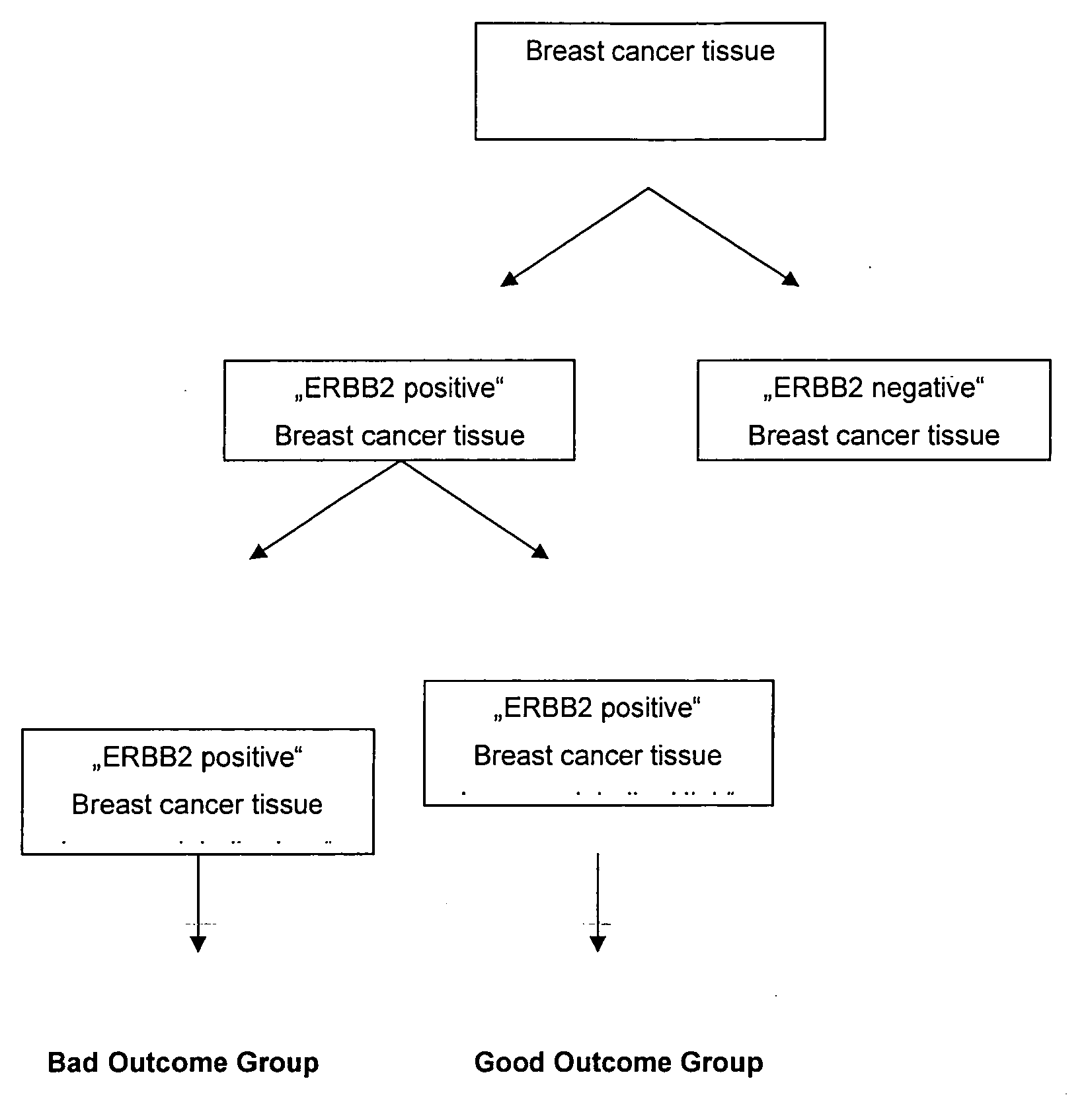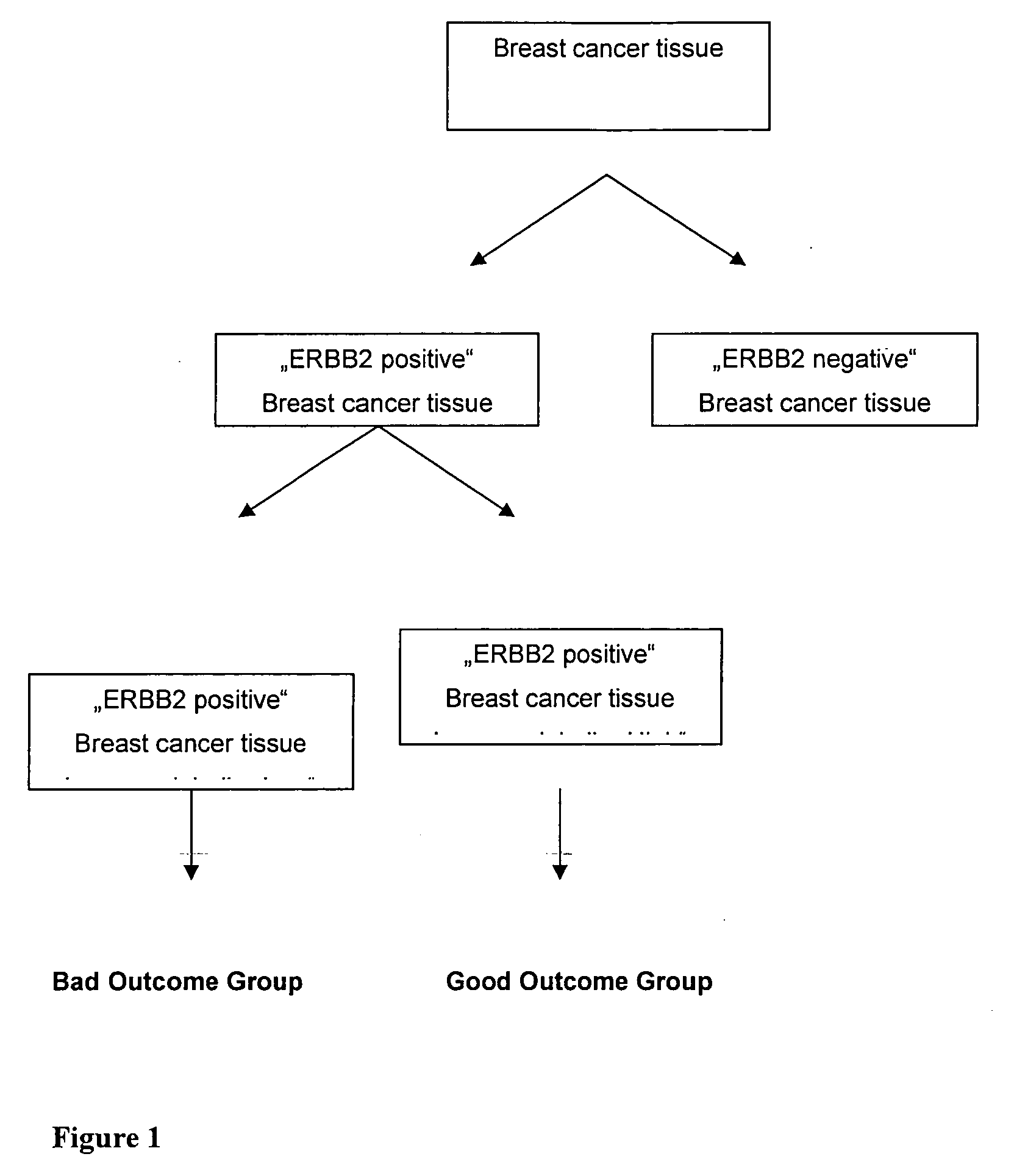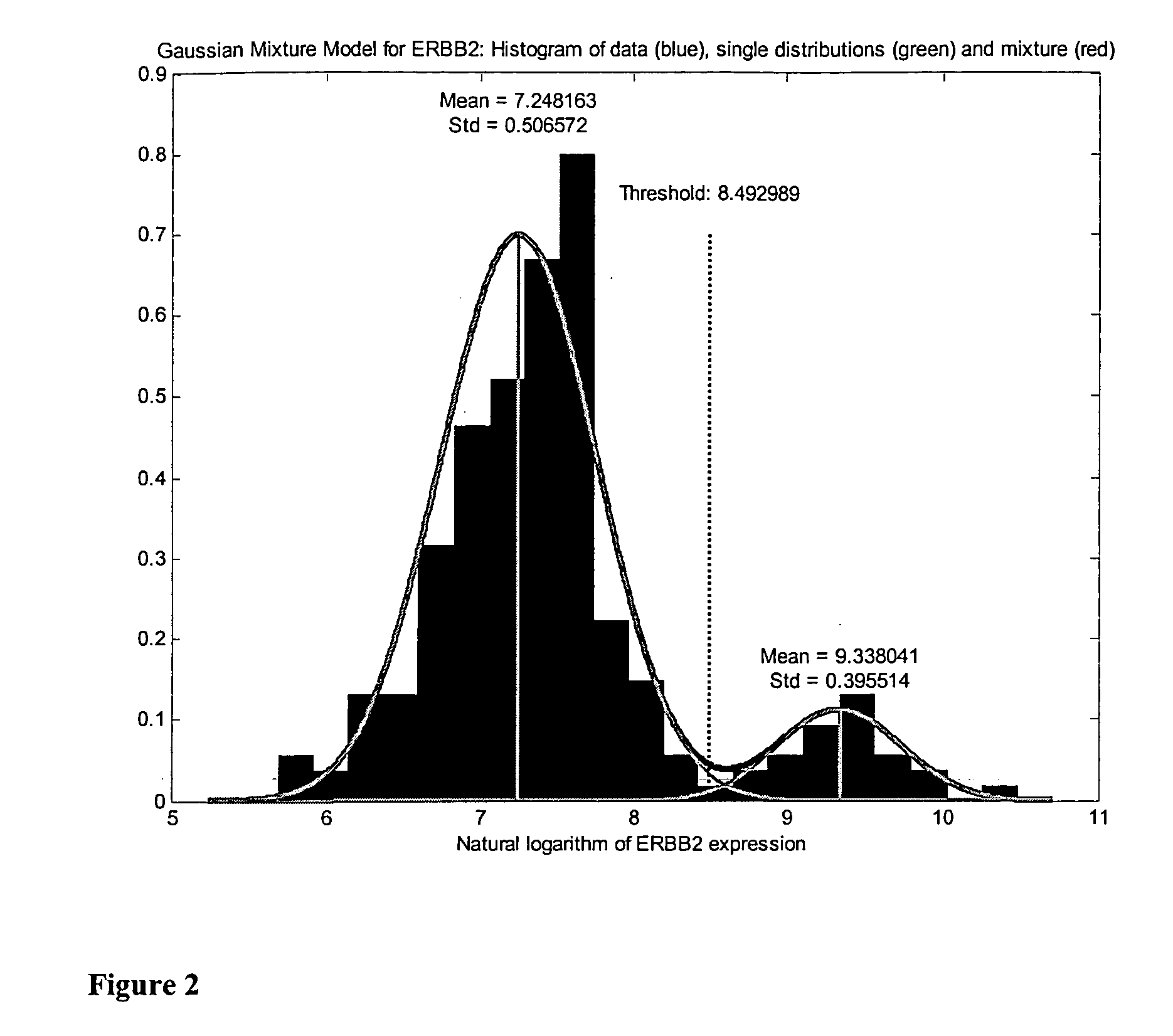Methods and Kits for Breast Cancer Prognosis
a breast cancer and prognosis technology, applied in the field of prognosis of a proliferative disease in a patient, can solve the problems of unfavorable vaccination approaches, unfavorable active immunotherapy, and enormous economic burden on the health care system
- Summary
- Abstract
- Description
- Claims
- Application Information
AI Technical Summary
Benefits of technology
Problems solved by technology
Method used
Image
Examples
example 1
Prognosis of ERBB2 Positive Breast Cancer—Cohort I
[0071]Patient Selection and RNA Isolation from Frozen Tumour Tissue Sections and Gene Expression Measurement Utilizing HG-U133A Microarrays of Affymetrix
[0072]Frozen sections were taken for histology and the presence of breast cancer was confirmed in samples from 205 patients with breast cancer. Tumour cell content exceeded 30% in all cases and was above 50% in most cases. Approximately 50 mg of snap frozen breast tumour tissue was crushed in liquid nitrogen. RLT-Buffer (QIAGEN, Hilden, Germany) was added and the homo-genate spun through a QIAshredder column (QIAGEN, Hilden, Germany). From the eluate total RNA was isolated by the RNeasy Kit (QIAGEN, Hilden, Germany) according to the manufacturers instruction. RNA yield was determined by UV absorbance and RNA quality was assessed by analysis of ribosomal RNA band integrity on the Agilent Bioanalyzer (Palo Alto, Calif., USA).
[0073]Starting from 5 μg total RNA labelled cRNA was prepared...
example 2
Prognosis of ERBB2 Positive Breast Cancer Samples—Cohort II
[0082]Patient Selection, RNA Isolation from Frozen Tumour Tissue Sections, and Gene Expression Measurement Utilizing HG-U133a Microarrays of Affymetrix
[0083]286 frozen breast cancer tissue samples had been selected from the tumour barik at the Erasmus Medical Center (Rotterdam, Netherlands) and had been processed as described by Wang et al. (2005. Gene-expression profiles to predict distant metastasis of lymph-node-negative primary breast cancer, Lancet 365: 671-679). Briefly, total RNA was isolated from 20-40 cryostat sections of 30 μm thickness (50-100 mg) with RNAzol B (Campro Scientific, Veenendaal, Netherlands). Biotinylated targets were prepared by published methods (Affymetrix, Santa Clara, Calif., USA) and hybridised to the Affymetrix oligonucleotide microarray U133a GeneChip. Arrays were scanned by standard Affymetrix protocols. Each probe set was treated as a separate gene. Expression values were calculated by use ...
PUM
| Property | Measurement | Unit |
|---|---|---|
| threshold | aaaaa | aaaaa |
| thickness | aaaaa | aaaaa |
| threshold | aaaaa | aaaaa |
Abstract
Description
Claims
Application Information
 Login to View More
Login to View More - R&D
- Intellectual Property
- Life Sciences
- Materials
- Tech Scout
- Unparalleled Data Quality
- Higher Quality Content
- 60% Fewer Hallucinations
Browse by: Latest US Patents, China's latest patents, Technical Efficacy Thesaurus, Application Domain, Technology Topic, Popular Technical Reports.
© 2025 PatSnap. All rights reserved.Legal|Privacy policy|Modern Slavery Act Transparency Statement|Sitemap|About US| Contact US: help@patsnap.com



